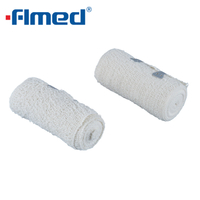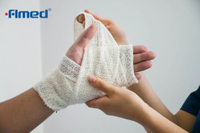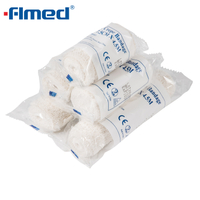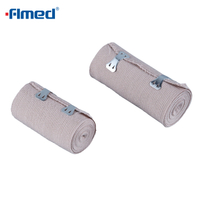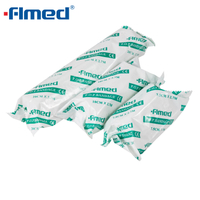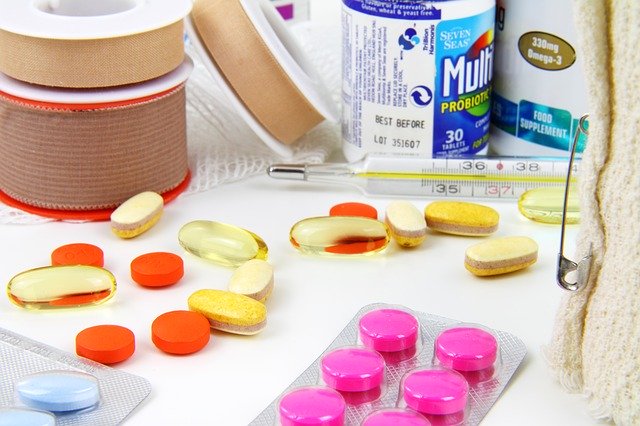
It can be very painful to tear off the bandage, especially if it's of good quality. Fortunately, there are many ways to remove the bandage binder. Regardless of the method used, be careful to use light pressure and wear. Any scrubbing or scraping will affect your skin and the adhesive. Different bandage adhesive products react differently to different treatments, so don't be discouraged if you fail at your first try. With a little time and effort, you can get rid of this irritating residue.
This article contains the following aspects:
1.Using Easy Household Remedies
1.A convenient way to soak in the warm, sticky water is to take a shower or shower. Bandage adhesive can be placed on its own, or you may need to wipe gently with a rag or mild abrasive pad. If you don't have time to shower or bathe, just fill a bowl or plate with warm water and soak the affected area. This is best if you can let the bandage adhesive soak for a long time.
2. Apply a layer of mild cooking oil. A few drops of olive oil, rapeseed oil, vegetable oil, coconut oil, or sunflower oil can help remove the adhesive from the bandage. Some binders are soluble in oil. When oil flows between the glue and the skin, others lose grip. For best results, gently apply oil to the affected area with a soft cloth or cotton swab. You don't need much, your goal is to gently apply the skin instead of soaking it. Let the oil soak for a minute or two, then wipe gently with a soft towel or cotton ball. Repeat as needed to remove any adhesive from the bandage.
3.Put ice on the bandage. Cover the ice with a thin sheet of paper to prevent it from sticking to the skin and stay in place for 5 minutes. Ice can make the bandage adhesive brittle, leading to its release.
2.Using Common Skin Care Products
1.Soak the residue in baby oil. Baby oil has the same effect as cooking oil, dissolving the bandage adhesive or releasing the adhesion to the skin. Another benefit is that most baby oils are particularly mild, making them a great choice for delicate skin.
Most baby oils are mineral oils and add a little smell. You can replace baby oil with pure mineral oil - usually cheaper.
If you want to remove the bandage adhesive from your child's skin, try adding a drop of food coloring to the baby oil and "covering" the affected area with it. The oil will remove the bandage adhesive and the colouring will cause interesting interference.
2. use mild emulsion. Since most emulsions have oil or fat (fat) bases, they remove bandage adhesives just like baby oil or cooking oil. Rub a small amount of lotion and then stand still for a few minutes. Then wipe with a soft towel or cotton ball.
Tasteless emulsion is the best. Chemicals used to add perfume sometimes cause pain and rash.
3. hot compress with baby oil, emulsion or some form of cooking oil. Since the temperature will loosen the adhesive used in the bandage, it can be used to make the material more effective. Warm water will wash away oil or emulsion, so please apply hot compress. Our article about heating bag introduces several simple methods in detail.
Try filling a tube of socks with dry, uncooked rice. Make a knot at the end of the opening and put the meter in. Microwave for 30 seconds until it's hot, but not too hot. When you put oil or emulsion in, put the cloth on the bandage adhesive.
If you are worried about greasy socks, please put a rag between the dressing and the skin.
3.Using Chemical Products
1. Local alcohol. It's a common household cleaner, cheap and usually available in grocery stores and discount stores. Local alcohol has a good dissolving effect on some band aids. Take a small amount of cotton swabs or cotton balls, place them for a while, and wipe them gently. Local alcohol can make the skin dry and stimulate the skin, especially the sensitive parts such as the face. Just a few drops at a time to rest the skin.
2. Wet with nail polish. Most of the nail polish remover is an acetone, a chemical solvent. Acetone is also a solvent for many common glues and bandage adhesives. Take a small amount of it to the affected area, leave it for a while, and continue to wipe it gently. The degree of skin dryness or irritation caused by acetone is similar to that of local alcohol, so similar preventive measures should be taken. If you can find it, pure acetone is as good as bath water. When using acetone, please note that it is highly flammable and cannot be mixed with heat. Avoid using non acetone clean nail polish because they do not contain solvents needed to dissolve bandage residues.
3. Put Vaseline on it. It acts like oil and lotion to remove bandage adhesive skin. A unique advantage is that Vaseline is super thick, so it's easy to make it sit for a long time (although its greasiness makes some people unhappy). Simply apply a thin layer to the infected skin, allow it to stand for 5 to 10 minutes, then wipe it off with a soft cloth or tissue. Four.
4. Use pharmacy-grade adhesive remover. These products are used to remove the adhesive from the bandage. The pharmacy-grade adhesive remover agent is usually produced in the form of spray or disposable wipes. They are a little more expensive and harder to find, but they are particularly effective.
5. After use chemical solution, wash with soap and water. Many chemical products (especially external alcohol, acetone) are exposed for too long and will not irritate the skin. To avoid this, always wash the area with soap and water after using these chemicals. This will help to move them from the skin and reduce irritation. If you can't remove all the bandages at once, consider waiting a day before using the irritating chemicals. Rest gives your skin a chance to rest and recover. In addition, the chemical treatment is mixed with a mild solution.
4. Conclusion
Through this article, we understand three different types of bandage removal, which will be widely used in our daily life. Our company produces all kinds of high quality bandages for a long time, sincerely hope to provide you with service.

 English
English

